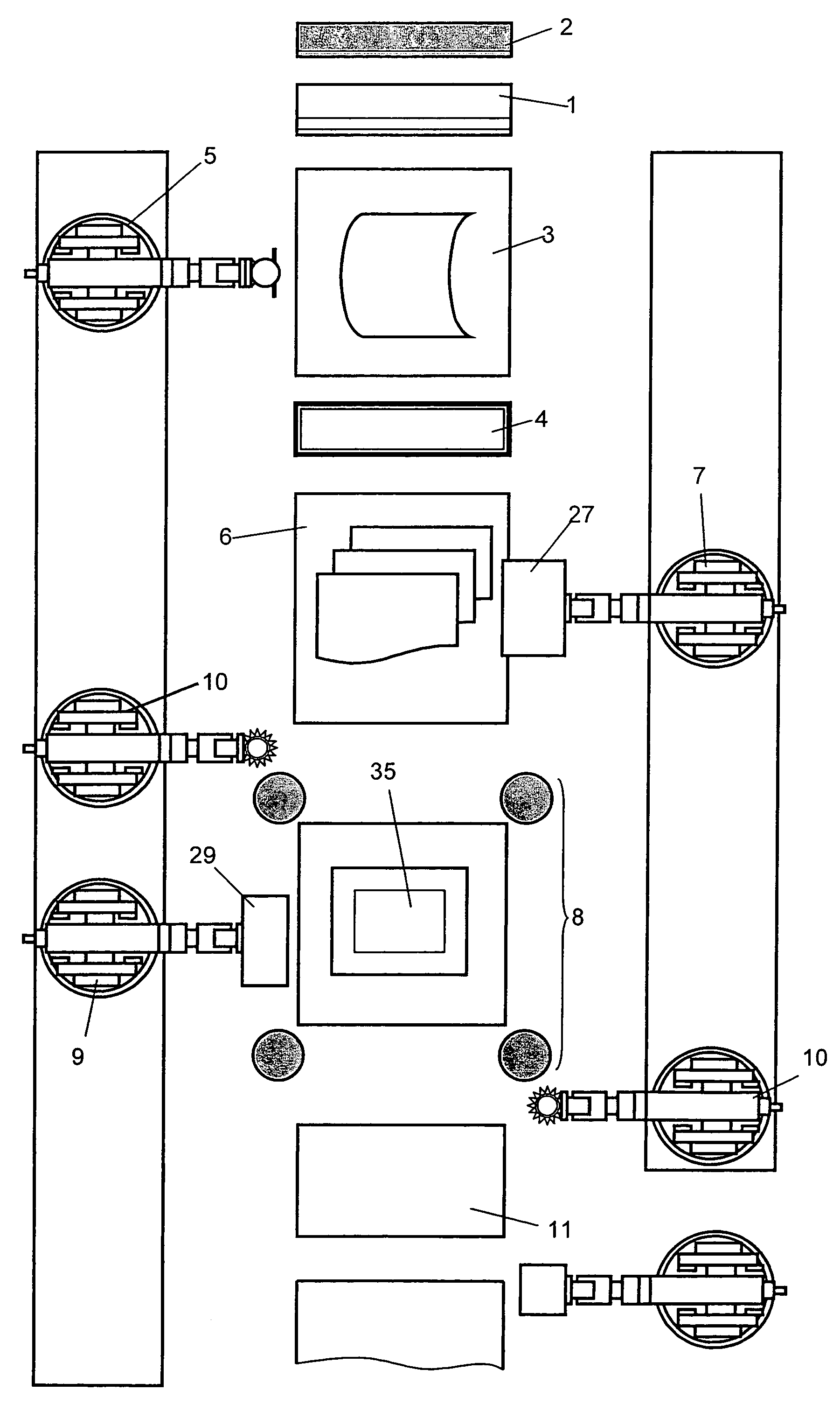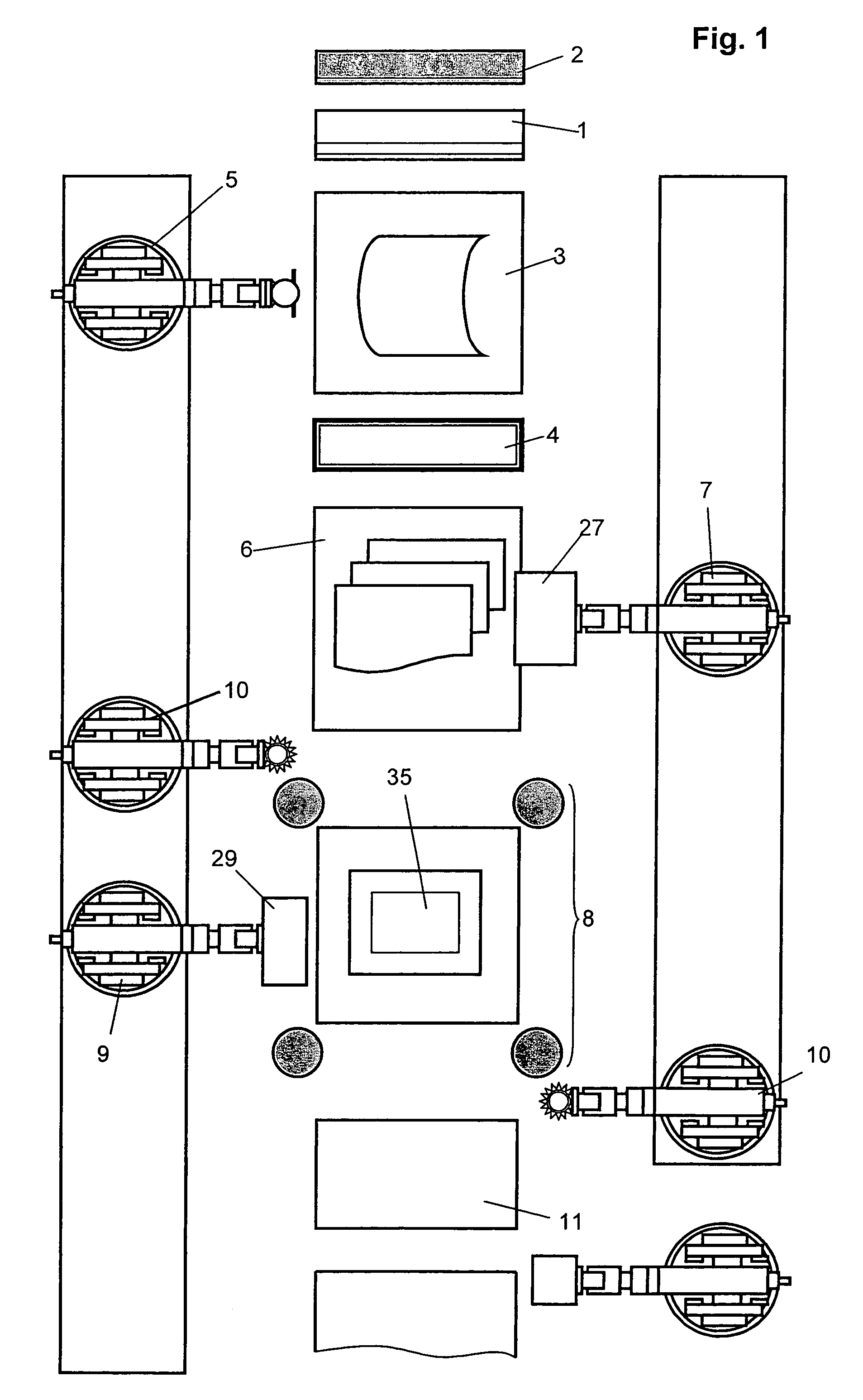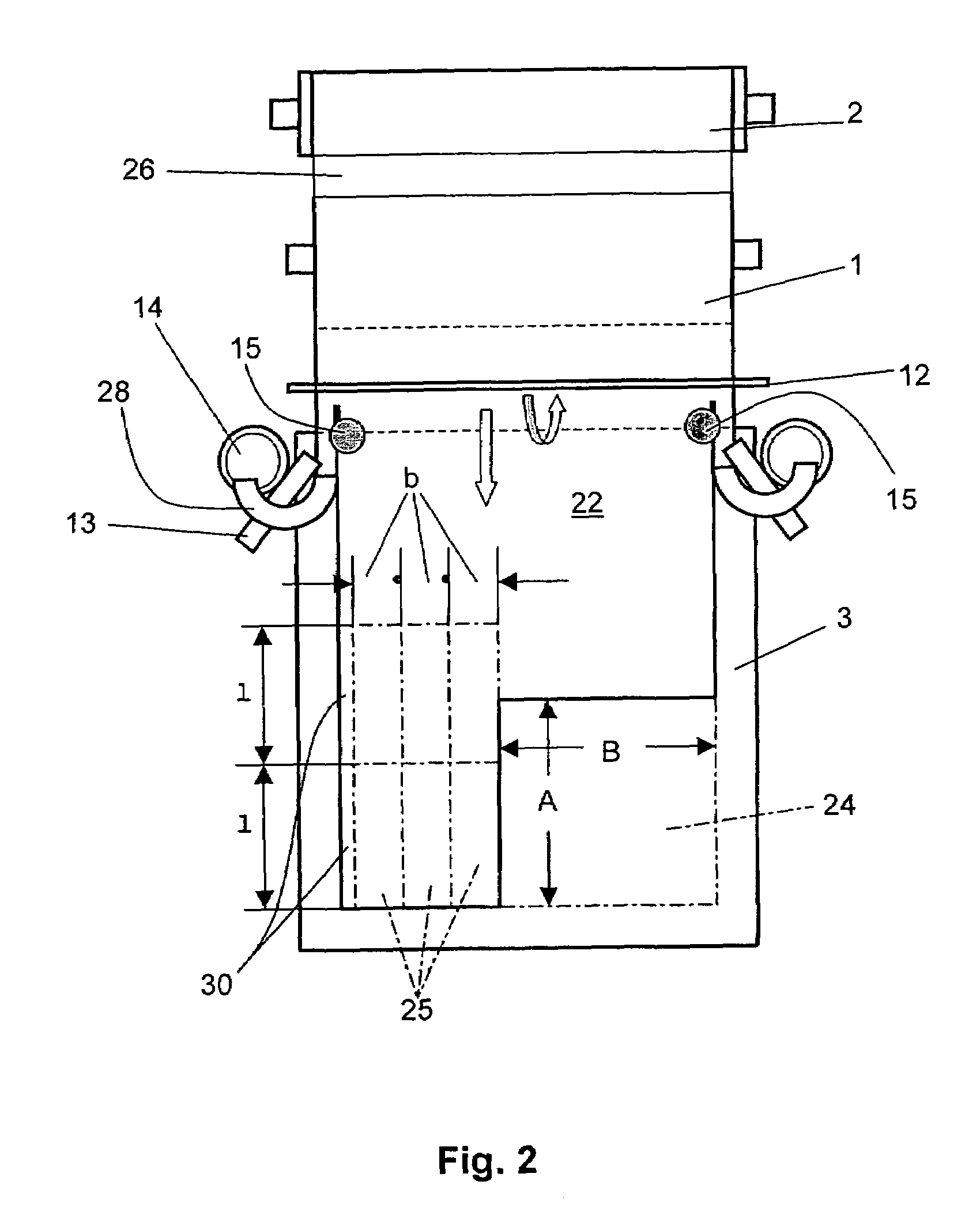Methods for assembling prepreg stacks having exact weight for producing SMC components
a technology of smc components and stacks, which is applied in the direction of lamination, ancillary operations, chemistry apparatus and processes, etc., can solve the problems of insufficient precision of prepreg webs, thin and weak points of components, surface roughness, etc., and achieve high accuracy, sufficient accuracy, and sufficient accuracy
- Summary
- Abstract
- Description
- Claims
- Application Information
AI Technical Summary
Benefits of technology
Problems solved by technology
Method used
Image
Examples
Embodiment Construction
[0021]The method on which the invention is based for manufacturing series of SMC components is to be briefly explained on the basis of the diagram of the method according to FIGS. 1 and 2. The SMC components are manufactured from a fibrous, reactive resin mass, which is provided in the form of a virtually endless prepreg web 22 wound up into a supply roll 1 as an intermediate. The fibers contained in the prepreg web are generally glass fibers; in the case of heavy-duty SMC components, carbon fibers or Kevlar fibers may also be integrated. The fibers are cut and have a length of approximately 1 to 5 cm. To maintain the reactivity of the synthetic resin in the prepreg web 22, the latter is covered on both sides with a protective film 26, which is pulled off and rolled up to form a separate roll 2 only shortly before the processing of the prepreg. As can be seen more clearly in FIG. 2, the protective film is deflected counter to the processing direction of the prepreg to the roll 2 via...
PUM
| Property | Measurement | Unit |
|---|---|---|
| Fraction | aaaaa | aaaaa |
| Weight | aaaaa | aaaaa |
| Thickness | aaaaa | aaaaa |
Abstract
Description
Claims
Application Information
 Login to View More
Login to View More - R&D
- Intellectual Property
- Life Sciences
- Materials
- Tech Scout
- Unparalleled Data Quality
- Higher Quality Content
- 60% Fewer Hallucinations
Browse by: Latest US Patents, China's latest patents, Technical Efficacy Thesaurus, Application Domain, Technology Topic, Popular Technical Reports.
© 2025 PatSnap. All rights reserved.Legal|Privacy policy|Modern Slavery Act Transparency Statement|Sitemap|About US| Contact US: help@patsnap.com



